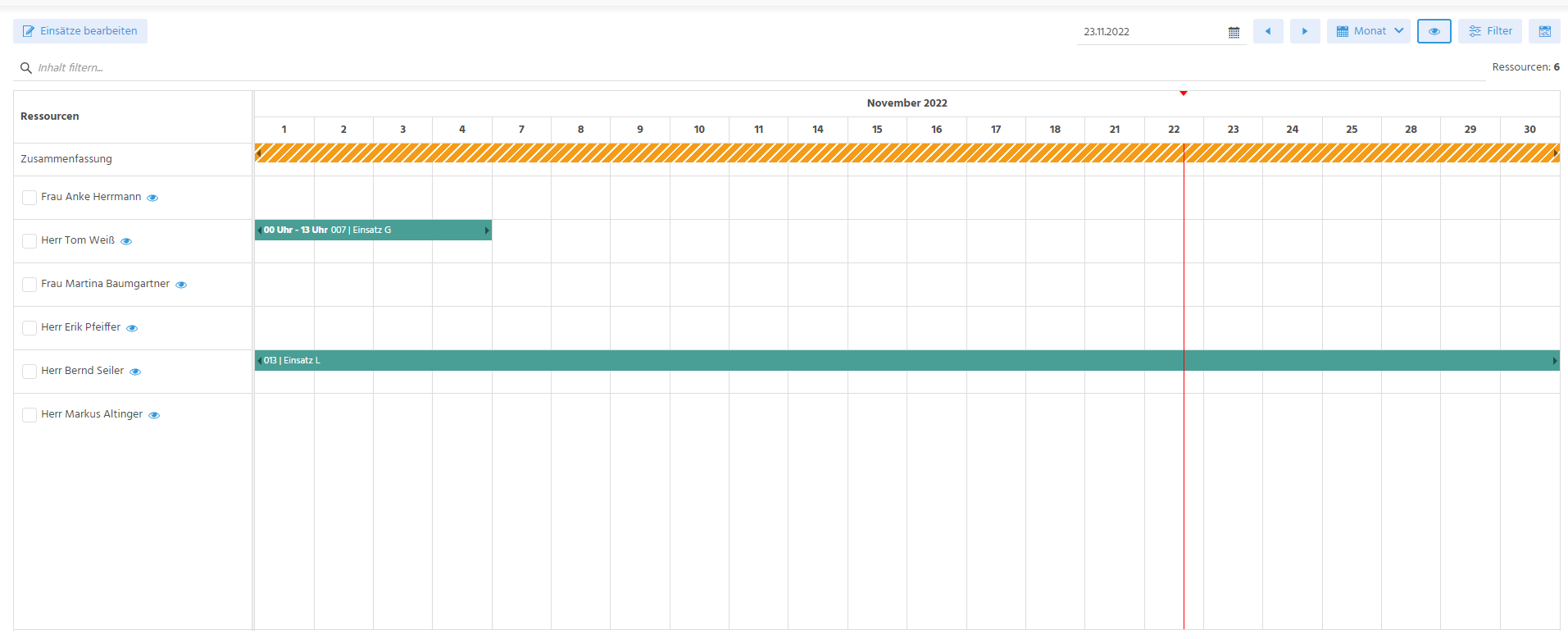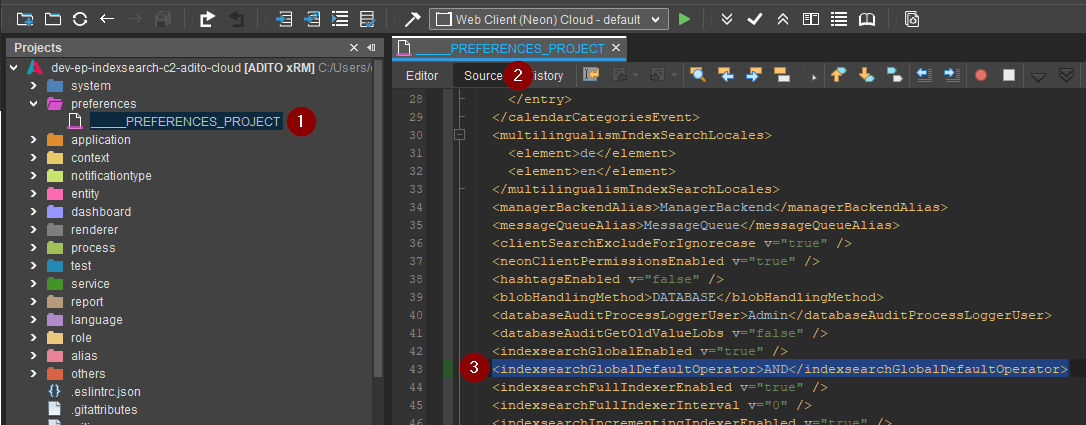2022.1.0 to 2022.2.0
1. Resource Planning View Template: Introduction of a new view template for resource scheduling
What changed
In version 2022.2.0, a new view template called the Resource Planning View Template was added. This template enables planning of operation timespans for multiple resources simultaneously.
Why it matters
This new template facilitates better visualization and management of resource allocation and scheduling, improving operational efficiency and planning accuracy.
Recommended actions
Explore and customize the ResourceTimeline ViewTemplate to fit your project’s resource scheduling needs. Refer to chapter ResourceTimeline for detailed instructions on how to configure and use this template.
Example usage

2. POP3 Email Protocol: Deprecation of POP3 support
What changed
The POP3 mail alias type and its associated protocol support are now marked as deprecated and will be removed in future releases.
Why it matters
Continued use of POP3 will no longer be supported, potentially causing mail access issues if not migrated.
Recommended actions
Migrate all mailboxes currently accessed via POP3 to the IMAP protocol. Update your project configurations by creating and configuring mail aliases that use IMAP instead of POP3 to ensure uninterrupted mail functionality.
3. RecordContainerCache / RemoteCache: Removal from server runtime
What changed
The server no longer runs the cache internally. The RecordContainerCache Alias Configuration is no longer included by default.
Why it matters
If your project still contains RecordContainerCache Alias Configurations, this may cause errors during server startup.
Recommended actions
- Remove the RecordContainerCache Alias Configuration from your systems to prevent startup errors.
- Alternatively, add and configure an Apache Ignite instance in your SSP system and adjust the alias configuration accordingly to restore caching functionality.
4. Index Search: Change of default standard search operator and expert parameter configuration
What changed
Starting with ADITO 2022.2.0, the default standard search operator for index searches was changed from AND to OR. This means search results now include entries matching any of the search terms rather than all terms.
Why it matters
This change increases the number of potentially relevant search hits, but may cause search results to differ significantly from previous versions.
Recommended actions
- Be aware that search results after updating may be broader and different due to the operator change.
- If you prefer to revert to the previous behavior using the
ANDoperator, you can configure this via an expert parameter.
Expert parameter configuration
The expert parameter indexsearchGlobalDefaultOperator can be added to your project preferences XML to set the default search operator.
Important: Expert parameters are hidden, system-wide properties that can significantly affect system behavior. Use them only if you understand the implications and always test thoroughly in a non-production environment first.
How to set the expert parameter
- Open the XML source of your project’s datamodel preferences by navigating to the
preferencesnode and double-clicking____PREFERENCES_PROJECT. - Switch to the source code view by clicking on
Source. - Add the following line inside the preferences node, preferably below existing
indexSearch...parameters:
<indexsearchGlobalDefaultOperator>AND</indexsearchGlobalDefaultOperator>
